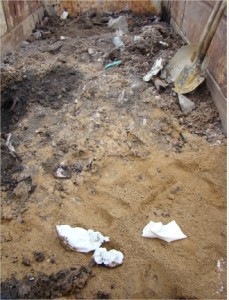A lorry carrying 10 m³ of sewer cleaning sand from a spa in France’s Allier Department activated the radiation detection portal upon entering a non-hazardous waste disposal facility at 11:35 am. One portal probe displayed 606 Becquerel (Bq)/m³, while the other read 536 Bq/m³ (the portal activation threshold had been set at 450 Bq/m³, or 3 times the site’s natural background level). Fire-fighters measured concentration rates at 1.7 µSv, well above the 100-nSv background in contact with the waste bin. France’s Radioprotection and Nuclear Safety Institute, Nuclear Safety Authority and the inspection authorities for classified facilities were informed of this detection. The bin was covered with a tarp and isolated on-site by a safety perimeter, allowing the semitrailer to continue its route after inspection. On 20 Jan, measurements were once again recorded. The activity level read 506 Bq/m³ on the first probe and 319 Bq/m³ on the second.
Three days later, activity had reached 541 Bq/m³ and 406 Bq/m³, respectively, at a concentration rate of 1.2 µSv. A specialist firm extracted 3 kg of sand to determine the radioelements responsible for this radiation release: their analyses (using gamma spectrometry) revealed these elements to be thorium 232 and uranium 238, both naturally occurring. The sludge was routed to a facility dedicated to storing earth and sands containing higher levels of natural radioactivity. The inspection authorities for classified facilities reminded the operator that waste generated beyond the vicinity of the Indre Department, home to the facility, could not be handled and moreover that the portal detection threshold needed to be set at twice the natural background.




